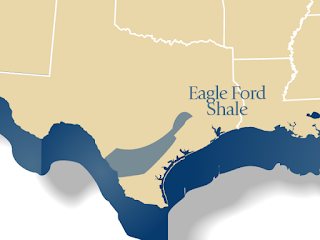 |
| Image source: howstuffworks.com |
The factors that determine the type of drilling method to be employed include the type of oil deposit, geographic location, as well as the driller's preference and outlook on the efficiency and environmental impact of a particular type of method.
Conventional drilling.The most common way to extract is a straight down method using technologies such as rotary drilling, cable drilling, or rotary percussion drilling.
Horizontal drilling. This method requires more advanced technologies that enable drillers to cut through rock horizontally along a thin deposit of oil. One technique is to drill two horizontal wellbores about three meters apart, and as steam is injected into the top bore, the heat precipitates oil down into the lower bore.
 |
| Image source: wikimedia.org |
Slant drilling. This is useful for oil reserves submerged in water as slant drilling minimizes environmental disturbance. A number of slant wells are drilled at an angle from one drill pad on the shore.
Directional drilling. A combination of horizontal and slant drilling, directional drilling is an advanced technique that changes direction and depth as frequently as needed. It is suited for oil reserves that are distributed across a landscape to minimize the environmental impact of the need to drill several wellbores.
Brian Alfaro is the founder and president of Primera Energy LLC, a leading oil and gas company based in San Antonio, Texas. For updates, follow this Twitter account.





